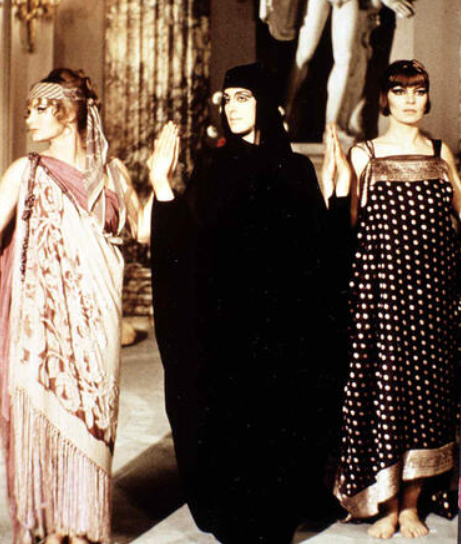Version française / Colloques / Appels à communication
- Unknown label,
39th International D. H. Lawrence Conference: Dramatic Lawrence
Published on July 12, 2025
–
Updated on July 13, 2025

Dates
from April 16, 2026 to April 18, 2026
Location
39th INTERNATIONAL D. H. LAWRENCE CONFERENCE
16, 17, 18 April 2026
Dramatic Lawrence
16, 17, 18 April 2026
Dramatic Lawrence
It was the end of Amleto, and I was glad. But I loved the theatre, I loved to look down on the peasants, who were so absorbed. At the end of the scenes the men pushed back their black hats, and rubbed their hair across their brows with a pleased, excited movement. And the women stirred in their seats.
(Twilight in Italy 150)
Among both readers and scholars, D. H. Lawrence’s plays have drawn less attention than his novels and poems. Three of his plays were published during his lifetime: The Widowing of Mrs Holroyd (1914), Touch and Go (1920) and David (1926). Others were posthumously published, among which A Collier’s Friday Night (1934) and much later The Daughter-in-Law (1965). Productions of his plays were quite rare till the end of the 1960s, when Peter Gill, for the Royal Court Theatre, successfully staged A Collier’s Friday Night and soon after The Daughter-in-Law for the first time. With an acute sense of realism, Lawrence’s plays produce scenes of the coal-mining community performed by characters (and actors) whose broad Midland dialect vividly recreates the sounds and atmosphere of this peculiar working-class.
The ambition of our conference this year is to explore the plays written by Lawrence and examine the various productions that have been performed for almost a century. But beyond the study of his plays, we would also like to invite reflections on the role and place of drama in his fiction, poetry, essays and letters. The vivid and authentic cues in his plays also noticeably characterize countless dialogues in his fiction, likewise foregrounding language no longer on stage but on the page, hence reproducing fictional dramatic scenes (like in “Odour of Chrysanthemums” for instance) or soliloquies, as when Birkin “Hamletises, and it seems a lie”. Some poems too, such as “Whether or Not” for instance, read as dramatic pieces much in keeping with the realistic ambition of Lawrence’s plays.
In his novels, fictional characters also happen to stage performances, like Hermione who in “Breadalby” famously proposes the idea of a play: props are promptly produced and “Naomi and Ruth and Orpah” materialize on the improvised stage in the drawing-room. The description of the fictional spectators’ reaction may lead us to reflections on notions like the creation (and power) of illusion and the suspension of disbelief. Other characters perform more spontaneously (like Connie dancing in the rain with Mellors as a spectator), or on the contrary read flatly (Clifford, “rusty now”, reads Racine to Connie: “Of the Racine she heard not one syllable”). This fictional staging of performance will thus be addressed, interrogating the role of each character, whether actor, actress, spectator, stage director, or even playwright – Michaelis writes plays and “had seized upon Clifford as the central figure for” one of them, turning the latter into a ridiculed “hero”.
As a traveller, spectator of other cultures, Lawrence depicts scenes of ethnological and ritual gathering almost as performances, notably in The Plumed Serpent, that lead him to address the issue of man’s position in Nature, of the individual and society. In Italy, Lawrence evokes his attending a performance of Ibsen’s Ghosts and describes in detail both what goes on on stage and among the Italian spectators (Twilight in Italy). Amleto is another play he attends, which leads Lawrence to a long reflexive digression on the meaning of Shakespeare’s play and the “great half-truth” of the Renaissance about the Infinite.
Hamlet also haunts several of Lawrence’s poems, like “The Ship of Death”, “Manifesto”, “Sleep” or “Ballad of another Ophelia”, in which the poet uses, subverts and literally plays with the words and iambic beat of the Shakespearian figures, and debunks their assertive positions – intertextual strategies that somehow dramatize the poems.
The study of all these aspects will, we hope, lead us to measure the various dramatic qualities of Lawrence’s oeuvre.
We invite reflections on the following non-exhaustive list of themes:
- Lawrence as a playwright
- Productions of Lawrence’s plays
- Play-acting and performances in Lawrence’s fiction
- Dramatic intertexts
- Shakespeare in Lawrence’s work
- Lawrence on drama
- Lawrence as a spectator; spectators in Lawrence’s work
The deadline for proposals is 25 October 2025.
Priority will be given to proposals received before the deadline, but we will continue to accept proposals until 31 October 2025.
Please send a 300-word abstract and a biographical note to Fiona Fleming f.fleming@parisnanterre.fr and Elise Brault-Dreux braultel@wanadoo.fr
Organizing Committee: Fiona Fleming, Elise Brault-Dreux.
Conference Fee: 80 euros
Link to our journal Etudes Lawrenciennes http://lawrence.revues.org/
Updated on 13 juillet 2025
Contact :
Fiona Fleming : f.fleming@parisnanterre.fr












